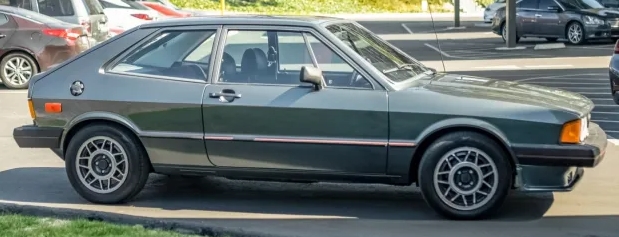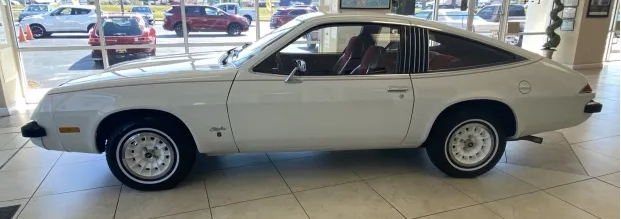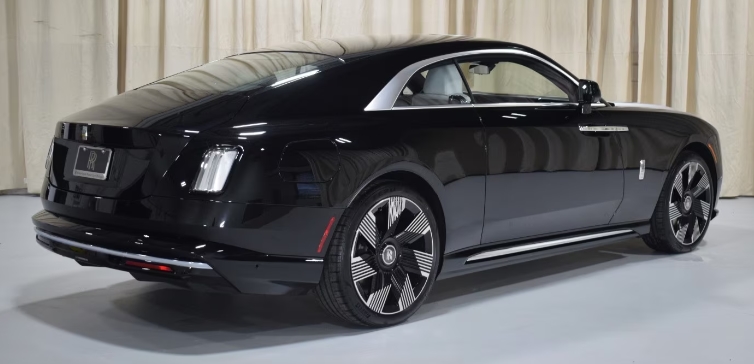The Evolution of the Volkswagen Scirocco
The Volkswagen Scirocco is an iconic sporty hatchback that has captured enthusiasts’ imaginations since its debut in the late 20th century. Known for its distinctive design, sporty performance, and German engineering excellence, the Scirocco has undergone significant evolution across its generations. This article provides a detailed chronological account of the Scirocco’s development, including production years, models, and trim levels offered throughout its history.
Origins and First Generation (1974–1981)
Introduction and Development
The Volkswagen Scirocco was introduced in 1974 as a successor to the successful Volkswagen Type 181 “Thing” and was developed as a sporty, coupe version of the Golf (originally known as the Rabbit in North America). Designed by Giorgetto Giugiaro at Italdesign, the first-generation Scirocco was built on the Volkswagen Golf Mk1 platform, sharing many components but distinguished by its sleek, coupe styling.
Production Years
- Production Period: 1974–1981
- Manufacturing Locations: Volkswagen plant in Wolfsburg, Germany, and other facilities
Models and Trim Levels
The first-generation Scirocco was available primarily as a two-door coupe. Throughout its production, it underwent several updates but maintained a relatively consistent lineup. The main models and trims included:
- Base Model: The standard Scirocco came equipped with a range of engines, starting with modest power outputs.
- LS Trim: Introduced as a more luxurious version with additional interior features and sometimes a higher trim package.
- GT and GTi Variants: The high-performance versions, especially in later years, with sportier suspensions and more powerful engines.
- Engine Options:
- 1.1L I4 (in early models)
- 1.3L I4
- 1.5L I4
- 1.6L I4
- 1.8L I4 (notably the 8-valve and later 16-valve versions)
- Diesel options, such as 1.5L and 1.6L turbodiesels, became available toward the late years
The first-generation Scirocco was notable for its sporty handling and relatively affordable price point, which helped it become a popular choice among enthusiasts and young drivers.
Second Generation (1981–1992)
Development and Design
The second-generation Scirocco, often called the Mk2, debuted in 1981. It featured a more angular and aerodynamic design, with improvements in aerodynamics and interior comfort. The platform was heavily based on the Golf Mk2, sharing many components but with a distinct sporty coupe silhouette.
Production Years
- Production Period: 1981–1992
Models and Trim Levels
Throughout its lifecycle, the Mk2 Scirocco was offered in various trims and special editions:
- Base Model: Continued with a range of inline-four engines, focusing on affordability and sporty appeal.
- GL, GLS, and GT trims: These trims added features like better interior materials, alloy wheels, sport seats, and upgraded suspensions.
- Scirocco 16V: Introduced in 1986, this model was equipped with a 1.8L 16-valve engine, significantly improving performance.
- Limited Editions and Special Models:
- Scirocco Storm: A special edition with unique styling cues.
- GT2: A more performance-oriented variant with sportier suspension and styling.
Engine Options
- 1.3L I4
- 1.6L I4
- 1.8L I4 (82 PS in early models)
- 1.8L 16V I4 (125 PS, introduced in 1986)
- Diesel variants included 1.6L and 1.9L turbodiesels
The Mk2 Scirocco established a reputation for sporty handling and more refined design, appealing to a broader audience.
Third Generation (2008–2017): Revival and Reintroduction
Background and Development
After a hiatus of nearly two decades, Volkswagen revived the Scirocco nameplate in 2008, marking the third generation (often called the Mk3). This model was developed to re-establish the Scirocco as a modern sporty coupe, combining contemporary styling with advanced technology.
Production Years
- Production Period: 2008–2017
Design and Features
The third-generation Scirocco was built on the Volkswagen Group’s PQ35 platform (also used by the Golf Mk5 and Mk6), offering a sleek, aerodynamic design with a sporty profile. It featured modern amenities, advanced safety features, and a range of efficient engines.
Models and Trim Levels
The lineup evolved over the years, with several trims and special editions:
- S: The base trim, offering essentials such as air conditioning, alloy wheels, and a basic audio system.
- SE: Added more comfort and convenience features like upgraded interior trim, cruise control, and parking sensors.
- R-Line: A sporty trim with distinctive styling elements like unique bumpers, side skirts, and larger wheels.
- GTS (2012–2017): A sportier variant with unique styling cues, sports suspension, and sometimes a more powerful engine.
- Limited Editions:
- Scirocco GTS Limited Edition: Featured exclusive paint colors, badges, and interior trims.
- Scirocco Black Edition: Offered black exterior accents, exclusive wheels, and premium interior features.
- Scirocco R: The high-performance model with performance-tuned suspension, 19-inch wheels, and a twin-turbocharged engine.
Engine Options and Performance
The third-generation Scirocco offered a diverse engine lineup:
- Petrol Engines:
- 1.4L TSI (122 PS, 160 PS)
- 2.0L TSI (200 PS, 211 PS in the R)
- 2.0L TSI with dual-clutch DSG transmission
- Diesel Engines:
- 2.0L TDI (140 PS, 170 PS, 184 PS)
- Special Variants: The Scirocco R (2010 onwards) featured a 2.0L TSI turbocharged engine producing 265 PS, with a sport-tuned suspension and performance upgrades.
The R model was particularly popular among enthusiasts, offering a blend of performance and style.
.
Are you keeping your vehicle all factory stock?
The Importance of Originality in Vintage Automobiles
.
Fourth Generation (2017–2019): End of Production
Discontinuation and Final Models
Volkswagen announced the end of Scirocco production in 2016, with the last units assembled in 2017. The decision was driven by changing market demands and the strategic shift toward SUVs and crossovers.
Features and Trim Levels
The final Scirocco retained the high-performance R model and the R-Line trim, which combined sporty styling with the latest technology and comfort features. The engine lineup remained similar to previous years, with an emphasis on efficiency and sporty performance.
Summary of the Volkswagen Scirocco’s Evolution
| Generation | Production Years | Notable Models & Trims | Key Engine Options | Notable Features |
|---|---|---|---|---|
| Mk1 | 1974–1981 | Base, LS, GT, GTi | 1.1L–1.8L I4 | Giugiaro design, sporty handling |
| Mk2 | 1981–1992 | Base, GL, GLS, GT, 16V | 1.3L–1.8L I4, 16V | Aerodynamic, improved performance |
| Mk3 | 2008–2017 | S, SE, R-Line, GTS, R | 1.4L–2.0L TSI, 2.0L TDI | Modern styling, tech, high-performance R |
| Final Edition | 2017–2019 | R, R-Line | Similar to previous | Discontinued, sporty farewell |
Conclusion
The Volkswagen Scirocco has been a symbol of sporty German engineering across multiple decades. From its debut in the 1970s as a stylish coupe based on the Golf platform, through its evolution into a more aerodynamic and refined vehicle in the 1980s, to its revival in the 2000s as a modern, tech-rich compact sports coupe, the Scirocco has maintained its appeal among enthusiasts worldwide.
Although production ceased in 2017, the Scirocco’s legacy endures through its distinctive design, engaging driving experience, and place in automotive history as a quintessential sporty hatchback. Its various models and trims over the years reflect the changing tastes and technological advancements in automotive engineering, making it a noteworthy chapter in Volkswagen’s lineup.







